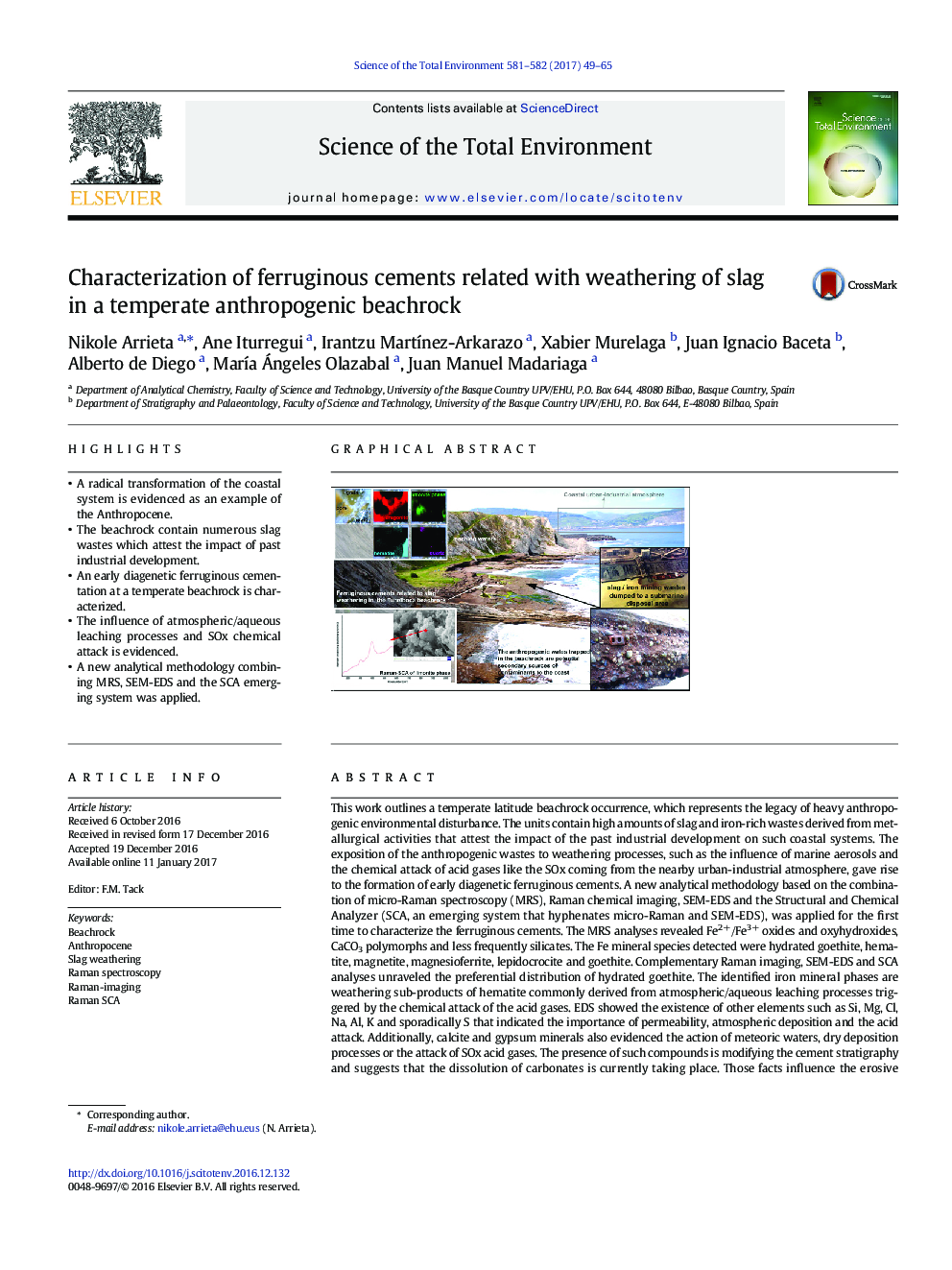| Article ID | Journal | Published Year | Pages | File Type |
|---|---|---|---|---|
| 5751755 | Science of The Total Environment | 2017 | 17 Pages |
â¢A radical transformation of the coastal system is evidenced as an example of the Anthropocene.â¢The beachrock contain numerous slag wastes which attest the impact of past industrial development.â¢An early diagenetic ferruginous cementation at a temperate beachrock is characterized.â¢The influence of atmospheric/aqueous leaching processes and SOx chemical attack is evidenced.â¢A new analytical methodology combining MRS, SEM-EDS and the SCA emerging system was applied.
This work outlines a temperate latitude beachrock occurrence, which represents the legacy of heavy anthropogenic environmental disturbance. The units contain high amounts of slag and iron-rich wastes derived from metallurgical activities that attest the impact of the past industrial development on such coastal systems. The exposition of the anthropogenic wastes to weathering processes, such as the influence of marine aerosols and the chemical attack of acid gases like the SOx coming from the nearby urban-industrial atmosphere, gave rise to the formation of early diagenetic ferruginous cements. A new analytical methodology based on the combination of micro-Raman spectroscopy (MRS), Raman chemical imaging, SEM-EDS and the Structural and Chemical Analyzer (SCA, an emerging system that hyphenates micro-Raman and SEM-EDS), was applied for the first time to characterize the ferruginous cements. The MRS analyses revealed Fe2+/Fe3+ oxides and oxyhydroxides, CaCO3 polymorphs and less frequently silicates. The Fe mineral species detected were hydrated goethite, hematite, magnetite, magnesioferrite, lepidocrocite and goethite. Complementary Raman imaging, SEM-EDS and SCA analyses unraveled the preferential distribution of hydrated goethite. The identified iron mineral phases are weathering sub-products of hematite commonly derived from atmospheric/aqueous leaching processes triggered by the chemical attack of the acid gases. EDS showed the existence of other elements such as Si, Mg, Cl, Na, Al, K and sporadically S that indicated the importance of permeability, atmospheric deposition and the acid attack. Additionally, calcite and gypsum minerals also evidenced the action of meteoric waters, dry deposition processes or the attack of SOx acid gases. The presence of such compounds is modifying the cement stratigraphy and suggests that the dissolution of carbonates is currently taking place. Those facts influence the erosive susceptibility and the release of the anthropogenic materials trapped originally in the beachrocks, which could act as potential secondary sources of contaminants to the coastal environment.
Graphical abstractDownload high-res image (467KB)Download full-size image
